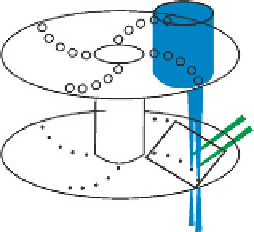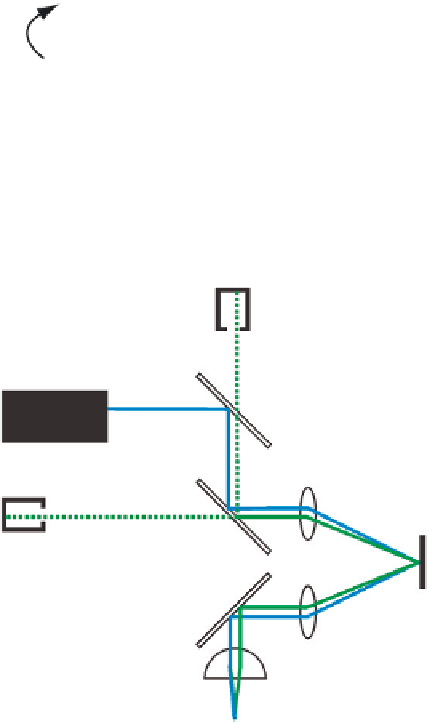Biology Reference
In-Depth Information
A
Excitation
light beam
Microlens array disk
Microlens
pinhole
Light detector
Emitted light
Nipkow pinhole array disk
Dichroic
beamsplitter
Objective
B
Light
detector 1
(conjugate)
Light source
Dichroic
beamsplitter
Dichroic
beamsplitter
Light
detector 2
(nonconjugate)
Reflective
LCOS array
Dichroic
beamsplitter
Objective
Fig. 5
(A) Nipkow spinning disk. The figure shows two light beams reaching the specimen and the
light detector, although, in reality, multiple beams reach the specimen and the light detector simulta-
neously. (B) The optical pathway of a programmable matrix microscope. The liquid crystal on silicon
(LCOS) array consists of numerous
m
m-sized liquid crystal ''pixels'' that can be switched independently
to reflect the lightbeam onto multiple spots simultaneously.
The alternative uses a reflective liquid crystal display (LCD), an array of microm-
eter-sized liquid crystal ''pixels,'' the base of which is coated with a reflective layer
(
Fig. 5
B). Each element is individually addressable, creating a controlled polariza-
tion pattern that is optically transformed into a confocal intensity pattern. So far,
the liquid crystal approach forms the basis for the commercial utilization of this
technique. This allows for using both the confocal image (conjugate with the array













